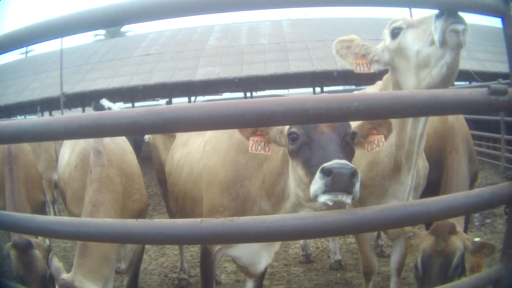- 271 Posts
- 429 Comments

 18·18 days ago
18·18 days agoCan’t speak for this specific blend sourcing they used in this study, but soy protein is usually cheaper in much of the world. It’s why most protein bars use soy protein isolate

 18·19 days ago
18·19 days agoThat’s a rather excessive amount unless you mean g protein/kg instead of g protein / lbs
People who exercise regularly also have higher needs, about 1.1-1.5 grams per kilogram. People who regularly lift weights or are training for a running or cycling event need 1.2-1.7 grams per kilogram. Excessive protein intake would be more than 2 grams per kilogram of body weight each day.
2g / kg = ~0.9g /lbs for reference

 43·19 days ago
43·19 days agoSure, but they intentionally built in large margins to these reference. Of course zero lead is ideal, but it’s not what happens in practice. The metric consumer reports used has a 1000x safety factor vs the FDA’s 10x safety factor
The FDA’s studies of dietary lead exposure show that the average American adult consumes between 1.7 and 5.3 micrograms daily through their normal food intake
[…]
The FDA, as part of its “Closer to Zero” campaign and using a 10X safety factor, has set its reference levels at 2.2 micrograms per day for children and 8.8 for women of childbearing age (to protect against accidental fetal exposure). This means that regularly exceeding these might pose health risks.
[…]
California’s Prop 65, however, used a far higher 1,000X safety factor (1,000 times lower than minimal known unsafe levels) to arrive at 0.5 micrograms of lead per day as its reference level.
From the same article as above

 44·19 days ago
44·19 days agoI assume you are referring to the consumer reports headlines, they have been greatly misleading. They have been using an extremely low level as their bar for concern. Here’s a recent piece talking about that
This is an unachievable safety target, significantly below the lead you get from average daily food consumption
[…]
But compared to the FDA’s more realistic numbers, 6.3 micrograms is 71.6 percent of the reference level for women of childearing age, meaning it’s safe even for at-risk individuals. For adult males, who are more likely to glug protein shakes, the risk is negligible. Children, with some exceptions, shouldn’t be consuming protein powder at all
[…]
And it bears noting that Consumer Reports’s tests showed levels of lead that were higher than tests of Huel carried out by the National Sanitation Foundation, an independent testing body, which showed that a serving of Huel Black came in under 3.6 micrograms
(https://archive.is/y6ZHk for paywall)

 1·21 days ago
1·21 days agoWait, apparently this varies from region to region after looking this up to check. In the US and Canada, Oatly is gluten free, but Europe and Asia it can have small amounts of it (from I think cross contamination)

 6·21 days ago
6·21 days agoWhat is linked is full of misinformation and disinformation. For instance, Canola oil does not naturally contain any trans fat and only has very small traces after refining. Dairy, for what it’s worth, also contains similar amounts trans fat
The article just also completely glances over environmental factors. Even if we took all this site’s claims as true (which we shouldn’t, they are citing someone who works for an animal ag lobby group), a claimed 1/3 emissions instead of a 75% reduction would makes it a “lie” because it doesn’t fix everything?
This site is also full of LLM generated articles with AI generated images, and this article has some signs of LLM writing: random bold, heavy em dash use, links to articles that have zero relation, etc.

 16·21 days ago
16·21 days agoIt’s now just a bit more. Just a little bit really


 12·21 days ago
12·21 days agoThough it is worth noting that almond milk is still lower than dairy across every environmental metric. Including water use weighted by water scarcity
(True of all plant milks)

 6·21 days ago
6·21 days agoHoisin sauce is typically vegan as is soy sauce and teriyaki among many others

 33·21 days ago
33·21 days agoSo you say, yet there is more room to increase it


 5·1 month ago
5·1 month agoI suggest read the original study instead of a paper’s interpretation of it. They suggest action, and that’s changing the suggested inhalers people use in most cases. It’s not “blame people for thing”, it’s “here’s a problem and how we can dramatically reduce it with some minor systemic changes”
All but 2 therapeutic classes (short-acting muscarinic antagonists and ICS-SABAs) had dry powder and/or soft mist inhalers available. If patients during the study period had received the inhalers with the lowest emissions intensity available at the time in each therapeutic class, total emissions would have decreased by 92%, from 24.9 million mtCO2e to 2.1 million mtCO2e (eTable 6 in Supplement 1).
[…]
This study identifies a high ceiling for potential climate-related gains from switching patients to therapeutically equivalent alternatives. Any such efforts to shift prescribing will likely depend on broadscale formulary changes—and the policies required to incentivize such changes—rather than just individual actions by patients and physicians, who may be limited by payer formularies when choosing particular inhalers
So I say “consider how some people actually do have a single source of protein per day, they’re not combining it with other food sources, but they should be aware of this” and your reply is “oh but you see they’re combining it with other food sources so that’s not important” flawless logic.
My point is that it effectively happens anyway without even having to think about it in 99% of cases. It’s not really a large issue in the slightest. It just makes things sound scarier and more complex than it needs to be. People have finite ability to focus on various health things, and this just isn’t something 99% of people need to be worried about
If someone is eating the exact identical source exclusively, every single day with no variation in anything, they are likely going to end up deficient in other things way before this, regardless of which thing they are eating (unless it’s something like Huel or Soylent which is designed to include everything). This is not at the level of “someone has beans a lot”. This is at the level of “virtually all of your calories come from beans” to be some larger issue
Many people use it as a lever to attack plant-based diets in situation that it just doesn’t apply at all by making it sound like it’s something you’re needing some spreadsheet for. It’s really not the case. Plus things like soy, chia, hemp, and more are also already complete too
I never said that. You mentioned it, I said I agreed, and you mentioned it again to reinforce a point I never made. Trying to pad out the comment or something?
I was not saying that you said this. I should have worded that better. I was trying to add some more context for relevant statements from authors talking about both complete proteins and protein combining. I did a poor job of that though
because your body will absolutely not fully digest the 2g of protein in your 100g plate of white rice.
You don’t need to digest all of it, it’s just about a specific amino acid (Methionine in this case which beans already have some of). It’s just a little bit to make it complete. For instance, one of the studies you linked with rice + lentils found the two together rose the DIASS to overall be 100% (122% for infants and kids, 143% for older adults)
I should also note protein quality metrics are also often based on some faulty assumptions for plants in particular. For instance, the DIASS has some flaws that make it undervalue the quality of plant proteins
While multiple strengths characterize the DIAAS, substantial limitations remain, many of which are accentuated in the context of a plant-based dietary pattern. Some of these limitations include a failure to translate differences in nitrogen-to-protein conversion factors between plant- and animal-based foods, limited representation of commonly consumed plant-based foods within the scoring framework, inadequate recognition of the increased digestibility of commonly consumed heat-treated and processed plant-based foods, its formulation centered on fast-growing animal models rather than humans, and a focus on individual isolated foods vs the food matrix. The DIAAS is also increasingly being used out of context where its application could produce erroneous results such as exercise settings. When investigating protein quality, particularly in a plant-based dietary context, the DIAAS should ideally be avoided.
https://link.springer.com/content/pdf/10.1007/s13668-020-00348-8.pdf
Many researchers argue the exact opposite - that it is way overemphasized. Especially because thing you might not think of as protein sources can add the missing other amino acids. Things like wheat, rice, etc. also have protein that can complement others. It’s extremely unlikely for a bean heavy diet to actually have beans as the sole source of all protein even if is the main source
Combining does not need to happen for every single meal: so long as the diet is varied and meets caloric needs, even vegans and vegetarians – people who tend to have more “incomplete protein” in their diet – can easily meet their amino acid needs. In other words, most people do not need to consider the completeness of proteins of single foods.[9]
https://en.wikipedia.org/wiki/Complete_protein
Especially the false idea that it has to be done at each meal
Protein combining has drawn criticism as an unnecessary complicating factor in nutrition.
In 1981, Frances Moore Lappé changed her position on protein combining from a decade prior in a revised edition of Diet for a Small Planet in which she wrote:
"In 1971 I stressed protein complementarity because I assumed that the only way to get enough protein … was to create a protein as usable by the body as animal protein. In combating the myth that meat is the only way to get high-quality protein, I reinforced another myth. I gave the impression that in order to get enough protein without meat, considerable care was needed in choosing foods. Actually, it is much easier than I thought.
“With three important exceptions, there is little danger of protein deficiency in a plant food diet. The exceptions are diets very heavily dependent on [1] fruit or on [2] some tubers, such as sweet potatoes or cassava, or on [3] junk food (refined flours, sugars, and fat). Fortunately, relatively few people in the world try to survive on diets in which these foods are virtually the sole source of calories. In all other diets, if people are getting enough calories, they are virtually certain of getting enough protein.”[13]: 162
The American Dietetic Association reversed itself in its 1988 position paper on vegetarianism. Suzanne Havala, the primary author of the paper, recalls the research process:
There was no basis for [protein combining] that I could see… I began calling around and talking to people and asking them what the justification was for saying that you had to complement proteins, and there was none. And what I got instead was some interesting insight from people who were knowledgeable and actually felt that there was probably no need to complement proteins. So we went ahead and made that change in the paper. [Note: The paper was approved by peer review and by a delegation vote before becoming official.]
Focusing on complete proteins is largely unhelpful 99.9% of cases. Unless you are eating a exclusively singular source of protein for all meals and snacks it’s going to be not practically relevant. You don’t need to get all the amino acids at the same meal - just at some point in the day. And even thing you don’t think of as protein sources can be enough to make something complete. For instance, just adding rice is enough to make beans complete
It’s also not the case that the beans don’t have all the amino acids, they do, it’s just less on certain ones. Which is why it can often take so little to make something complete protein. Complete is just a bar of “does it have this specific threshold of the amino acids”, not does it contain them at all
Incorrect, you can always have more beans
Source: I love beans
Very fitting username for this post. I wish I could be so clever. Alas, they are tricky to come up with

 9·2 months ago
9·2 months agoAnd their expectation was a 400% increase too!

 26·2 months ago
26·2 months agoThe question science isn’t ready to answer


















Plus why does cost of transport have inconsistent spacing between lines and inconsistent scale movement? The scale is neither linear nor log. It sometimes doubles, and then sometimes just adds 0.2, 2, or 20. And also still a scale that’s flipped from (at least my) expectation would be with more efficient towards the top and less efficient towards the bottom. Sometimes there’s a minor grid line, sometimes there isn’t. And sometimes the minor grid line isn’t even at the half mark
At least the body weight keeps to a consistent log scale
Is there a data is ugly community?